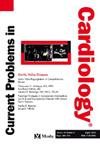与时间赛跑:第一次植入后LVAD感染时间和患者预后的影响。
IF 3.3
3区 医学
Q2 CARDIAC & CARDIOVASCULAR SYSTEMS
引用次数: 0
摘要
背景:左心室辅助装置(lvad)可作为晚期心力衰竭患者的救命支持,但容易发生感染性并发症。这些感染的时机可能在决定临床结果方面起着至关重要的作用。本研究探讨了早期(≤18个月)和晚期(≤18个月)LVAD感染的差异。方法:在本回顾性队列研究中,回顾了105例LVAD患者的病历,并确定了50例LVAD相关感染。这些患者根据感染时间进行分类:早期(植入后≤18个月)和晚期(植入后≤18个月)。分析的变量包括患者人口统计学、感染类型、微生物病因学、植入后并发症、疗程、复发率和生存结果。结果:早期感染与更严重的LVAD感染相关,包括更高的菌血症和念珠菌血症发生率。它还与更具侵袭性病原体的感染、早期感染中金黄色葡萄球菌的较高患病率(45%对26%)、较高的复发率(80%对63%)(p=0.029)和较短的复发时间有关。在复发的患者中,菌血症主要与复发相关。此外,早期感染导致更高的死亡率(25.8%对15.7%)和更短的平均生存时间(2.3年对4年)。结论:与晚期感染相比,早期LVAD感染与更高的复发率和更差的临床结果相关。这些发现表明,更密切的监测、更积极的早期干预和量身定制的抗菌策略可能会改善植入后早期患者的预后。需要前瞻性研究来验证这些观察结果,并指导LVAD患者的感染预防策略。本文章由计算机程序翻译,如有差异,请以英文原文为准。
A race against time: The impact of timing of first post-implantation LVAD infection and patient outcomes
Background
Left ventricular assist devices (LVADs) serve as lifesaving support for patients with advanced heart failure but are prone to infectious complications. The timing of these infections may play a crucial role in determining clinical outcomes. This study examines the differences between early (≤18 months) and late (>18 months) LVAD infections.
Methods
In this retrospective cohort study, 105 LVAD patient charts were reviewed, and 50 patients identified to have LVAD-related infections. These patients were categorized based on the timing of infection: early (≤18 months post-implantation) and late (>18 months). Variables analyzed included patient demographics, infection type, microbial etiology, post-implantation complications, treatment course, relapse rates, and survival outcomes.
Results
Early infections were associated with more severe LVAD infections, including higher rates of bacteremia and candidemia. It was also linked to infection with more aggressive pathogens, higher prevalence of Staphylococcus aureus in early infections (45 % vs. 26 %), a higher relapse rate (80 % vs. 63 %) (p = 0.029), and a shorter time to relapse. Among those with relapses, bacteremia was predominantly associated with the recurrence. Furthermore, early infections resulted in higher mortality (25.8 % vs. 15.7 %) and a shorter mean survival time (2.3 vs. 4 years).
Conclusions
Early LVAD infections are associated with higher relapse rates and worse clinical outcomes compared to late infections. These findings suggest that closer monitoring, more aggressive early interventions, and tailored antimicrobial strategies may improve patient outcomes in the early post-implantation period. Prospective studies are needed to validate these observations and guide infection prevention strategies in LVAD patients.
求助全文
通过发布文献求助,成功后即可免费获取论文全文。
去求助
来源期刊

Current Problems in Cardiology
医学-心血管系统
CiteScore
4.80
自引率
2.40%
发文量
392
审稿时长
6 days
期刊介绍:
Under the editorial leadership of noted cardiologist Dr. Hector O. Ventura, Current Problems in Cardiology provides focused, comprehensive coverage of important clinical topics in cardiology. Each monthly issues, addresses a selected clinical problem or condition, including pathophysiology, invasive and noninvasive diagnosis, drug therapy, surgical management, and rehabilitation; or explores the clinical applications of a diagnostic modality or a particular category of drugs. Critical commentary from the distinguished editorial board accompanies each monograph, providing readers with additional insights. An extensive bibliography in each issue saves hours of library research.
 求助内容:
求助内容: 应助结果提醒方式:
应助结果提醒方式:


